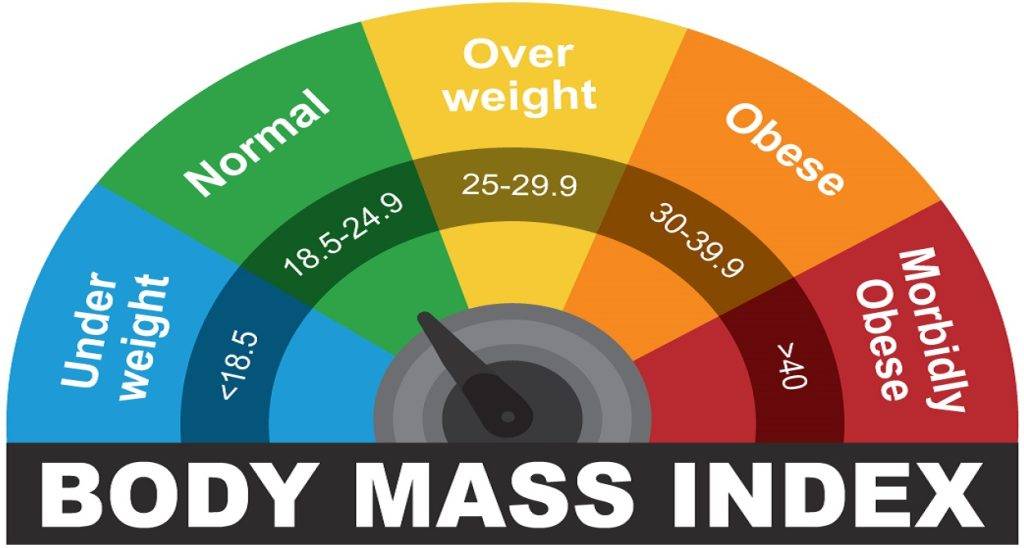For many people, the biggest unanswered question about health, weight, and age is what is a healthy weight by age and sex.
A healthy weight for adults is typically determined using the body mass index (BMI). BMI is calculated by dividing a person’s weight in kilograms by their height in square meters.
Below is a general guide for healthy weight ranges based on age and sex. Remember that these ranges may vary based on an individual’s height, frame size, muscle mass, and body fat distribution.

For Males:
Ages 20-39: 18.5-24.9 BMI
Ages 40-59: 19.0-25.9 BMI
Ages 60-79: 19.5-26.4 BMI
For Females:
Ages 20-39: 18.5-24.9 BMI
Ages 40-59: 19.0-25.9 BMI
Ages 60-79: 19.5-26.4 BMI
What exactly is BMI, and how is it calculated?
Body Mass Index (BMI) measures body fat based on an individual’s weight and height. It can help to determine if a person is in a healthy weight range for their height.
BMI is calculated by dividing an individual’s weight (in kilograms) by height (in square meters). A person with a BMI of 25 or higher is considered overweight, while a person with a BMI of 30 or higher is considered obese.
Is BMI Accurate for all Ethnicities?
No, BMI is not accurate for all ethnicities. BMI does not consider body composition, bone density, or other factors affecting a person’s health.
Different ethnicities may have different body types and sizes, impacting how BMI is interpreted. Additionally, BMI does not consider muscle mass, which can lead to overestimating a person’s body fat percentage if they have a lot of muscle.
Health Issues with BMI Between 30 and 35
Individuals with a BMI between 30 and 35 are considered to be obese and are at very high risk for developing health issues. These issues include, but are not limited to, high blood pressure, type 2 diabetes, heart disease, stroke, gallbladder disease, sleep apnea, osteoarthritis, and certain cancers. Obese individuals are also at a greater risk for developing psychological issues such as depression, anxiety, and low self-esteem.
Good and Bad Body Fat
Good body fat is essential for a healthy body and normal bodily functions. It helps to regulate body temperature, cushion and protect organs, and provide energy when food is scarce. Good body fat is typically found in the hips, thighs, and abdomen and is known as essential fat.
Bad body fat is excess fat that accumulates in the body and can lead to health issues such as high cholesterol, heart disease, and diabetes. It is typically located in the abdominal area, appearing as a “beer belly” or “tyre” around the midsection.
Maintaining a healthy body fat percentage is essential, as is eating a balanced diet and exercising regularly to reduce the risk of health complications due to wrong body fat.
Overweight people are at greater risk of developing numerous medical conditions when bad body fat reaches a point where it impacts health issues like:
-Heart disease
-High blood pressure
-Diabetes
-Stroke
-Cancer
-Osteoarthritis
-Sleep apnea
-Gallbladder disease
-Respiratory problems
-High cholesterol
-Depression
-Polycystic ovarian syndrome
-Nonalcoholic fatty liver disease
-Gastroesophageal reflux disease
Visceral Fat
Visceral fat is the fat that is stored in and around a person’s abdominal organs. It is often called “deep” or “hidden” fat because it is not visible outside the body. Visceral fat has been linked to an increased risk of several health issues, including heart disease, type 2 diabetes, stroke, and some types of cancer. Maintaining a healthy lifestyle, including regular physical activity and a balanced diet, is essential to reduce visceral fat in the body.
